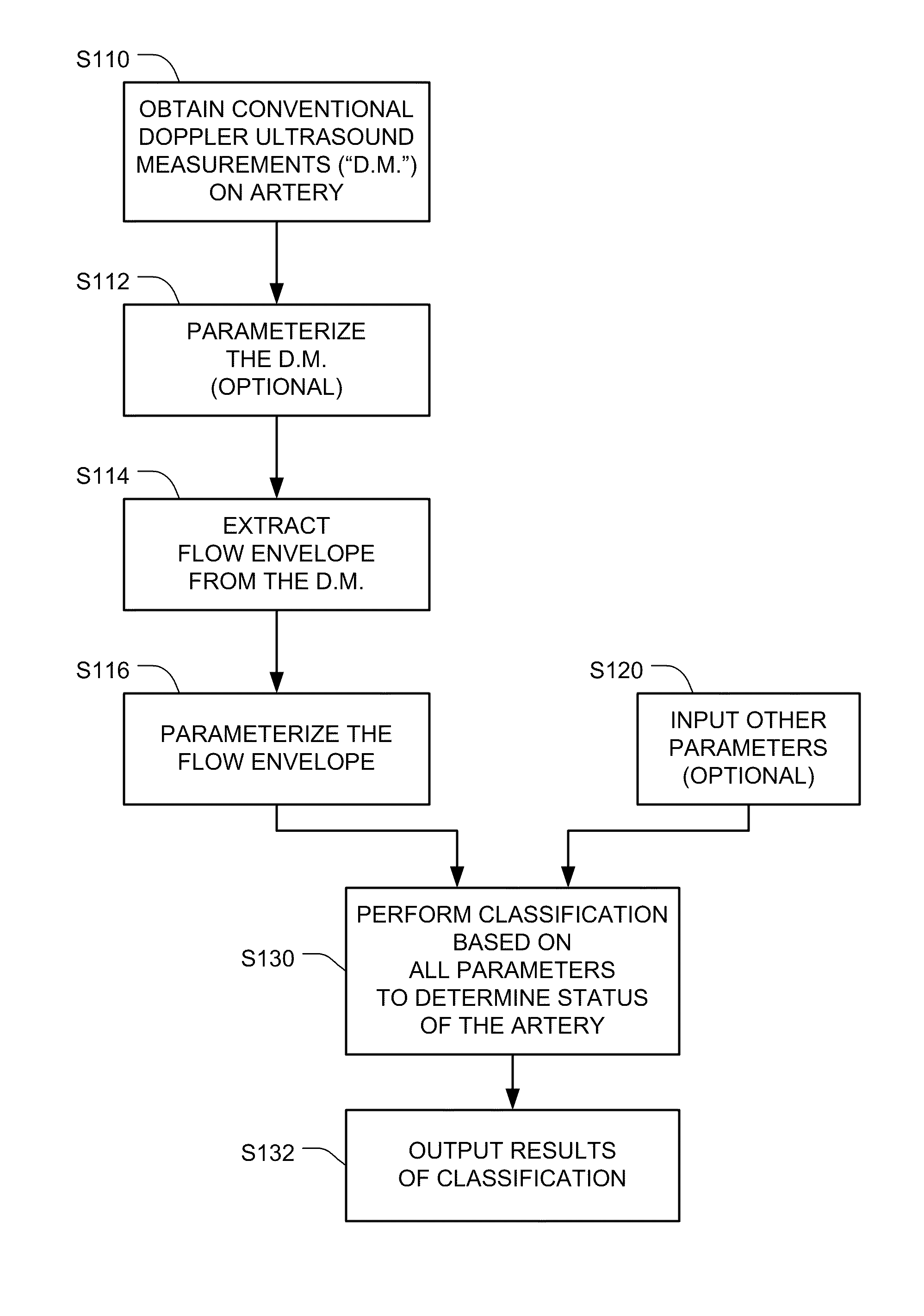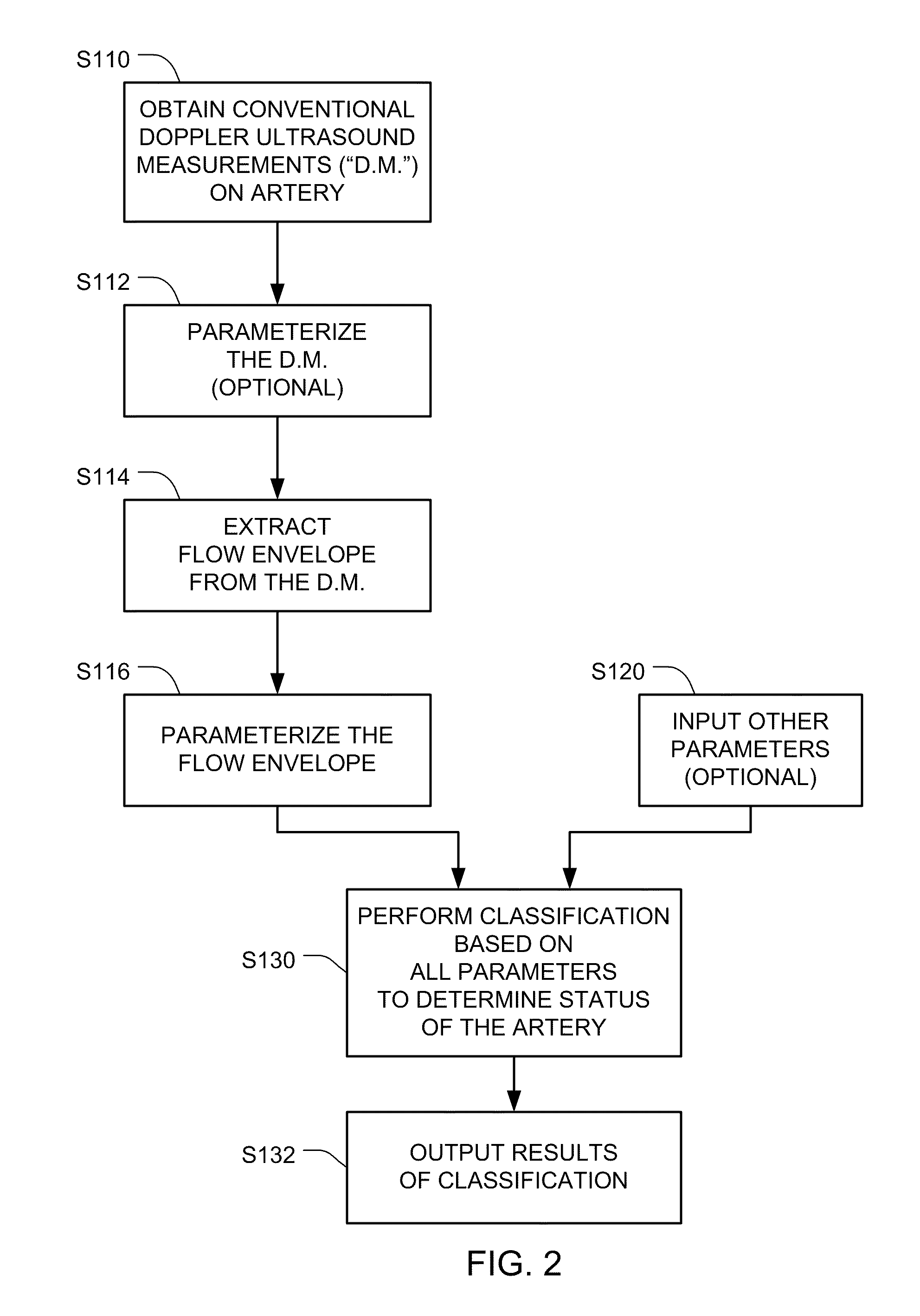Detecting a stenosis in a blood vessel
a technology for detecting stenosis and blood vessels, applied in the field of detecting stenosis in blood vessels, can solve the problem of not being able to use blood flow velocity measurements alon
- Summary
- Abstract
- Description
- Claims
- Application Information
AI Technical Summary
Benefits of technology
Problems solved by technology
Method used
Image
Examples
Embodiment Construction
[0028]Two approaches are described herein for overcoming the above problem, and for diagnosing and characterizing stenoses based on Doppler measurements. The first approach uses a multi-parameter analysis of Doppler data. The second approach uses Doppler data that is acquired in a direction that is perpendicular to the direction of blood flow, a direction that was traditionally thought to be useless for this purpose. Optionally, these two approaches can be combined.
[0029]I. Multi-Parameter Analysis of Doppler Data
[0030]The first approach uses parametric characterization of fluid flow in vessels, including flow under varying pressure and flow in vessels the cross section of which is not constant, i.e. they have one or more narrowing, such as stenoses in blood vessels, or a widening (aneurisms), etc. Characterization of the flow rate, velocity, power, time course, and duration of the parameters, and combinations of all of the above, are made. The data analyses can be made on-line or o...
PUM
 Login to View More
Login to View More Abstract
Description
Claims
Application Information
 Login to View More
Login to View More - R&D
- Intellectual Property
- Life Sciences
- Materials
- Tech Scout
- Unparalleled Data Quality
- Higher Quality Content
- 60% Fewer Hallucinations
Browse by: Latest US Patents, China's latest patents, Technical Efficacy Thesaurus, Application Domain, Technology Topic, Popular Technical Reports.
© 2025 PatSnap. All rights reserved.Legal|Privacy policy|Modern Slavery Act Transparency Statement|Sitemap|About US| Contact US: help@patsnap.com



